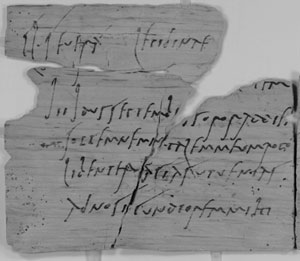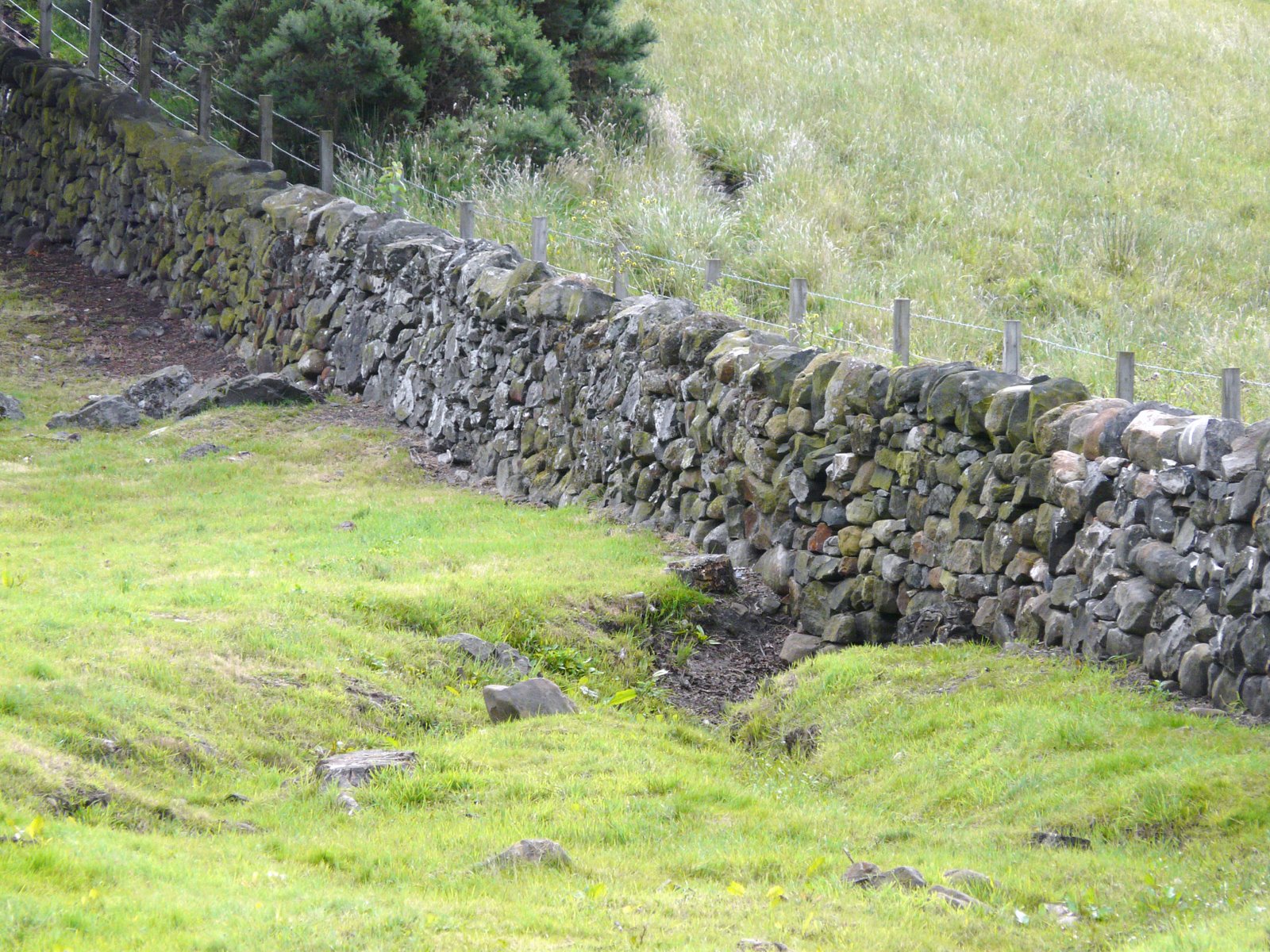Roman Britain
Also confronting any northern raiders (Picts and Scots) would be a series of ditches and berms on the northern side of the wall and a number of forts staffed with Roman troops on the southern side of the wall. About 10,000 soldiers in all filled the forts along the wall, including cavalry units of 1,000 troops stationed at either end. One of those forts along the wall was at Vindolanda. And from this settlement have been recovered the Vindolanda tablets, the oldest surviving handwritten documents in the whole of Britain.
The tablets are the size of a postcard. They are scored down the middle and then folded to form a diptych, so they fold up, protecting the writing inside. Archaeologists have found several hundred of these in some part, unearthed in a 1973 excavation. They are official military records, and they are also personal messages from soldiers to their families, including a party invitation. That is known as Tablet 291, and it is written from a fort commander's wife, Claudia Severa, to her friend Sulpicia Lepidina. It's an invitation to a birthday party. It is also one of the earliest known examples of writing in Latin by a woman. Hadrian's Wall was largely successful at stopping the raiding of Roman territory by northerners. But Hadrian himself died in 138, and his successor, Antoninus Pius, decided to build another wall, this one farther north, in what came to be called the Scottish Lowlands. The Antonine Wall, begun in 142, was 99 miles north of Hadrian's Wall.
This new wall was made of hardened turf, with a bit of a stone foundation, and was a bit more than 310 feet high and 16 feet high wide. A deep ditch on the northern side was designed to at least slow down any sudden attacks. On the south side was a road known as the Military Way, which linked all of the forts. Rome would have occupied all of the territory in between; but although Antoninus succeeded in that regard, he didn't do any better than Hadrian had at conquering the northern tribes. Roman soldiers occupied the Antonine Wall for only 8 years. The new emperor, Marcus Aurelius, ordered a withdrawal to Hadrian’s Wall in 164. Historians don’t have anything like a soldier’s diary from these times; they know of sustained attacks from the north in 180 and between 190 and 197. In the early 3rd Century, Rome had a new emperor, Septimius Severus. He was the first African emperor of Rome, and he settled himself onto the throne in 193. Severus spends a decade or so consolidating his position. Then, in 208, he ordered repairs to Hadrian's Wall, and he came over personally to oversee some of the work. Whether he intended it or not, this led to a new name for the wall, the Severan Wall. This Severan reconstruction was referred to as such by a few medieval chroniclers, but the name Severan Wall didn’t stick. The wall is still called Hadrian’s Wall today. |
|



 These are examples of something uncommon: writing in ink on wood. Most writing at this time was done on wax tablets. They are also uncommon in how they were made. The Romans at Vindolanda sourced local wood, so that would have been alder and birch and oak. Elsewhere, the Romans used imported wood. The Vindolanda ink was a mixture of carbon, gum arabic, and water.
These are examples of something uncommon: writing in ink on wood. Most writing at this time was done on wax tablets. They are also uncommon in how they were made. The Romans at Vindolanda sourced local wood, so that would have been alder and birch and oak. Elsewhere, the Romans used imported wood. The Vindolanda ink was a mixture of carbon, gum arabic, and water. This new wall was 40 Roman miles long, or nearly 43 miles long, and ran from the Firth of Forth to the River Clyde. Nearly two dozen forts were built as well.
This new wall was 40 Roman miles long, or nearly 43 miles long, and ran from the Firth of Forth to the River Clyde. Nearly two dozen forts were built as well.
